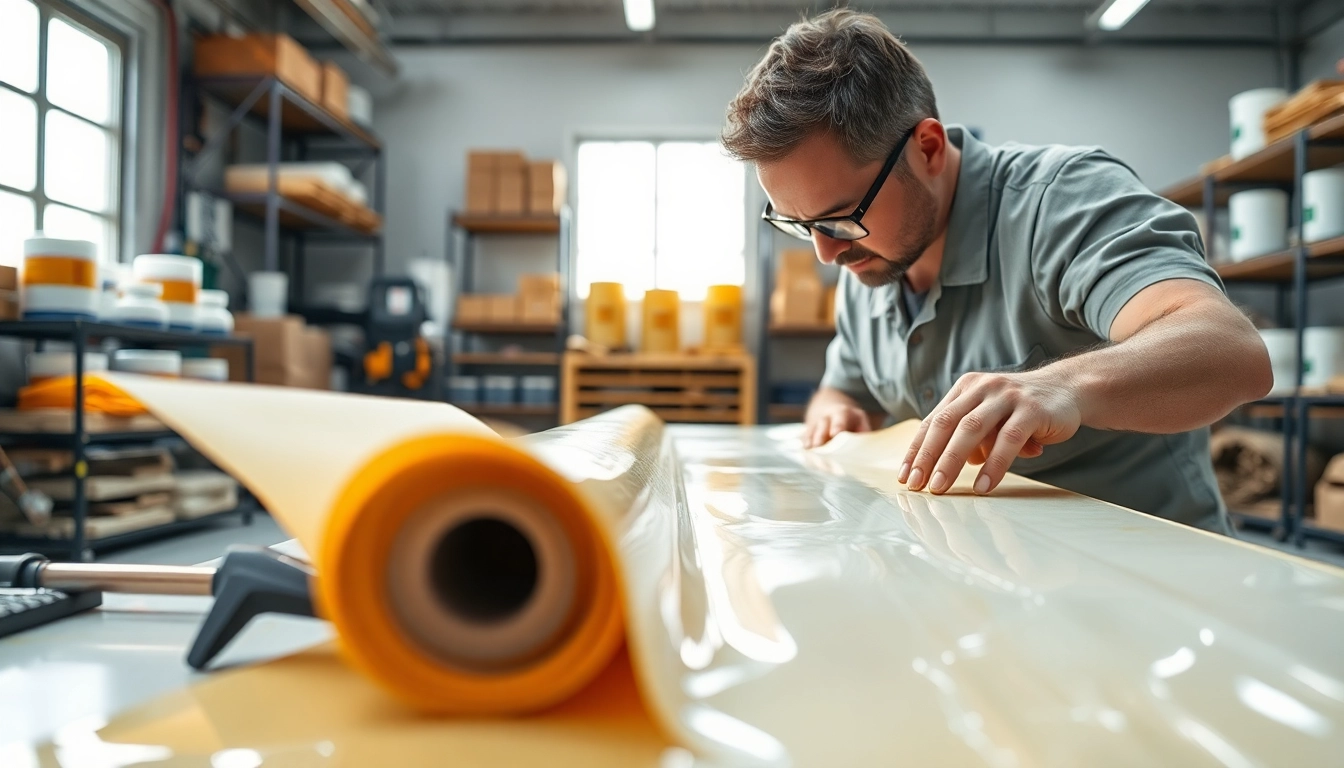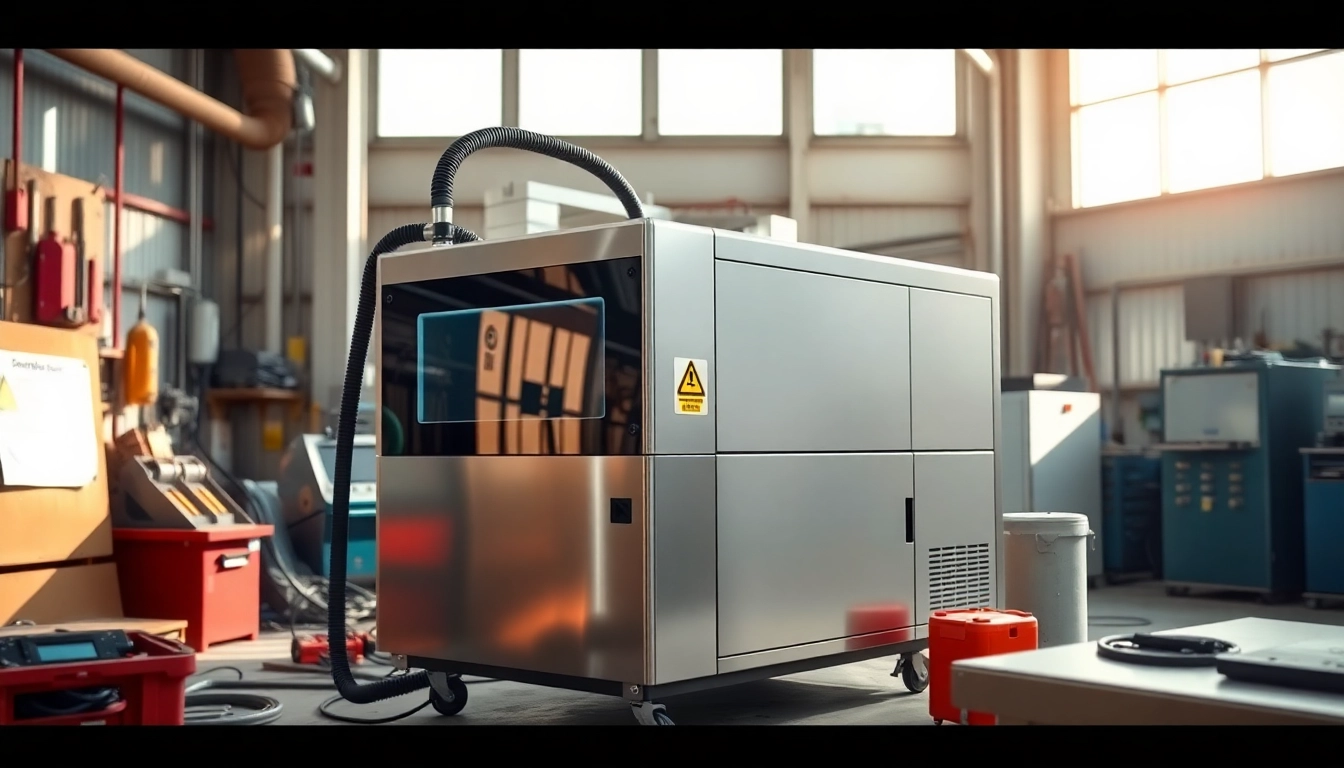Understanding Laminating Resin: An Overview
Laminating resin is a crucial material in the fields of construction, automotive, aerospace, and marine industries, among others. This versatile resin acts as a binding agent, holding various materials together, typically in applications involving fiberglass layups. By understanding its composition, types, and applications, users can better appreciate the significance of laminating resin in modern manufacturing processes. For those looking to dive deeper into this topic, any discussion of laminating resin must cover its definition, different types, and key applications across several industries. You can explore more about this laminating resin to get comprehensive insights.
Definition and Composition of Laminating Resin
Laminating resin is a synthetic resin designed for use in composite materials. Typically composed of unsaturated polyesters or epoxies, it is formulated to provide excellent adhesion, corrosion resistance, and durability. In the case of polyester laminating resin, it often includes a catalyst (like MEKP, methyl ethyl ketone peroxide) to initiate the curing process, which hardens the resin. Epoxy laminating resin, on the other hand, comprises epoxide groups that polymerize when mixed with hardeners, resulting in enhanced strength and chemical resistance.
Types of Laminating Resin: Polyester vs. Epoxy
There are two predominant types of laminating resin: polyester and epoxy. Understanding the differences between these types is vital for selecting the right material for your project.
Polyester Laminating Resin
Polyester laminating resin is widely used in applications where a balance of cost-effectiveness and performance is necessary. It is well-regarded for its excellent wet-out characteristics, which allow it to bond seamlessly with fiberglass. Additionally, polyester resin typically has a lower density, making it suitable for lightweight applications. However, it tends to have lower durability in harsh environments compared to its epoxy counterpart.
Epoxy Laminating Resin
Epoxy laminating resin is known for its superior strength, flexibility, and thermal stability. It exhibits excellent adhesion properties, allowing it to bond effectively with various substrates. Although often more expensive than polyester resin, its enhanced durability makes it a preferred choice for critical applications, particularly where structural integrity is paramount or in demanding environmental conditions.
Key Applications of Laminating Resin in Various Industries
The versatility of laminating resin extends to multiple sectors, serving vital roles in each. Here are some key applications across different industries:
- Marine Industry: Used in constructing boats, yachts, and other marine vessels, laminating resin provides the necessary strength and waterproof qualities.
- Aerospace: Laminating resin is crucial in building lightweight aircraft components, ensuring that parts remain rigid under high-stress conditions.
- Automotive: Many automotive manufacturing processes utilize laminating resin to produce composite panels and parts, offering weight reduction and increased fuel efficiency.
- Construction: In the building sector, laminating resin is utilized in securing structural components, reinforcing structures, and producing strong molds for concrete applications.
Benefits of Using Laminating Resin
The choice to use laminating resin in manufacturing and construction environments comes with myriad advantages. Understanding these benefits can aid in informed decision-making during material selection.
Strength and Durability of Laminating Resin
Laminating resin is renowned for its impressive strength-to-weight ratio. This characteristic is particularly beneficial in industries like aerospace and automotive, where minimizing weight while maximizing strength is essential. Moreover, laminating resin compounds are resistant to moisture, chemicals, and UV damage, ensuring long-lasting performance even in demanding conditions.
Cost-Effectiveness of Laminating Resin in Production
Using laminating resin can lead to significant cost savings during production. Its easy application process reduces labor costs, while its capacity to bond various materials can cut down on the need for additional adhesives or fasteners. Furthermore, the versatility of laminating resin allows manufacturers to produce lightweight components that can enhance energy efficiency in end products, thereby providing additional savings in operational costs.
Environmental Considerations in Laminating Resin Usage
With growing concerns over environmental sustainability, laminating resin manufacturers are increasingly focusing on minimizing environmental impacts. Many advanced laminating resins now feature reduced volatile organic compounds (VOCs), which can enhance indoor air quality. Moreover, some brands are exploring bio-based resins, derived from renewable sources, which serve as eco-friendly alternatives while still meeting performance standards of traditional resins.
Techniques for Applying Laminating Resin
Applying laminating resin can be a straightforward process when the appropriate techniques and tools are utilized. Below, we explore a comprehensive guide to successfully applying laminating resin, along with common pitfalls to avoid.
Preparation: Tools and Materials Needed
Gathering the right tools and materials beforehand is essential for a smooth application process. Here’s a list of commonly needed items:
- Laminating resin (polyester or epoxy)
- Catalyst or hardener (if applicable)
- Mixing containers
- Stirring sticks
- Rollers, brushes, or spray equipment
- Protective gear (gloves, goggles, respirator)
- Fiberglass sheets or cloth (depending on the application’s needs)
Step-by-Step Guide to Applying Laminating Resin
Here is a step-by-step guide for applying laminating resin effectively:
- Surface Preparation: Ensure that all surfaces are clean, dry, and free of debris. Sanding the surface may improve adhesion.
- Mixing: Follow the manufacturer’s instructions to mix the laminating resin and catalyst in a well-ventilated area. Take care not to over-mix, as excessive air can affect the resin’s performance.
- Application: Use a roller or brush to apply an even coat of resin to the prepared surface. If working with fiberglass, lay the fiberglass cloth over the resin and saturate it with more resin.
- Layering: If multiple layers are necessary, allow the first coat to become tacky before applying additional layers. This will help with adhesion between layers.
- Curing: Allow the resin to cure as per the manufacturer’s instructions. Follow appropriate temperature guidelines and avoid disturbing the work until fully cured.
Common Mistakes to Avoid When Working with Laminating Resin
Despite its relative ease of use, there are common mistakes that can occur when working with laminating resin. Here are a few pitfalls to watch out for:
- Improper Mixing: Ensure thorough mixing of the resin and catalyst to avoid soft spots within the cured material.
- Poor Surface Preparation: Skipping surface preparation can lead to weak adhesion and potential failure.
- Ignoring Environmental Conditions: Temperature and humidity can significantly impact the curing process of laminating resin. Always work within recommended conditions for best results.
Performance Metrics for Laminating Resin Projects
Evaluating the performance of laminating resin is critical for ensuring quality and durability in finished products. Several metrics can be used to assess performance effectively.
Measuring Adherence and Bonding Strength
Adherence and bonding strength can be quantified by conducting lap shear tests, which measure the strength of the bond under tension. This data can help determine whether the chosen laminating resin is suitable for the intended application.
Testing Durability and Environmental Resistance
Durability testing involves exposing laminated samples to various environmental conditions, such as UV light, humidity, and extreme temperatures. These tests provide insights into how well the resin composition will withstand real-world application scenarios over time.
Evaluating Cost vs. Value of Laminating Resin
When assessing cost-effectiveness, it’s essential to weigh the upfront costs of laminating resin against longevity, performance, and any potential savings in future repairs or replacements. Value can be measured not just in dollars, but in how well the resin enhances the performance of the final product.
Future Trends in Laminating Resin Technology
As technology evolves, so too does the landscape of laminating resin. Emerging trends are shaping the future of this vital material.
Innovations in Laminating Resin Formulations
Manufacturers are innovating newer formulations that enhance the properties of laminating resin. These advancements include resins with improved thermal stability, flexibility, and environmental resistance. Moreover, nano-fillers and additives are being investigated to create even stronger and lighter resin composites.
Sustainability and Eco-Friendly Laminating Resin Solutions
With the increasing emphasis on sustainability, the development of bio-based laminating resins is gaining traction. These resins, derived from renewable resources, aim to reduce reliance on petroleum-based materials, aligning with eco-friendly objectives across various industries.
Predictions for the Laminating Resin Market
The demand for high-performance laminating resin is expected to rise in tandem with advancements in the manufacturing sector. Projections indicate a growth in applications ranging from construction to automotive, suggesting that the laminating resin market will remain robust and continue to evolve in response to innovative applications and environmental considerations.



